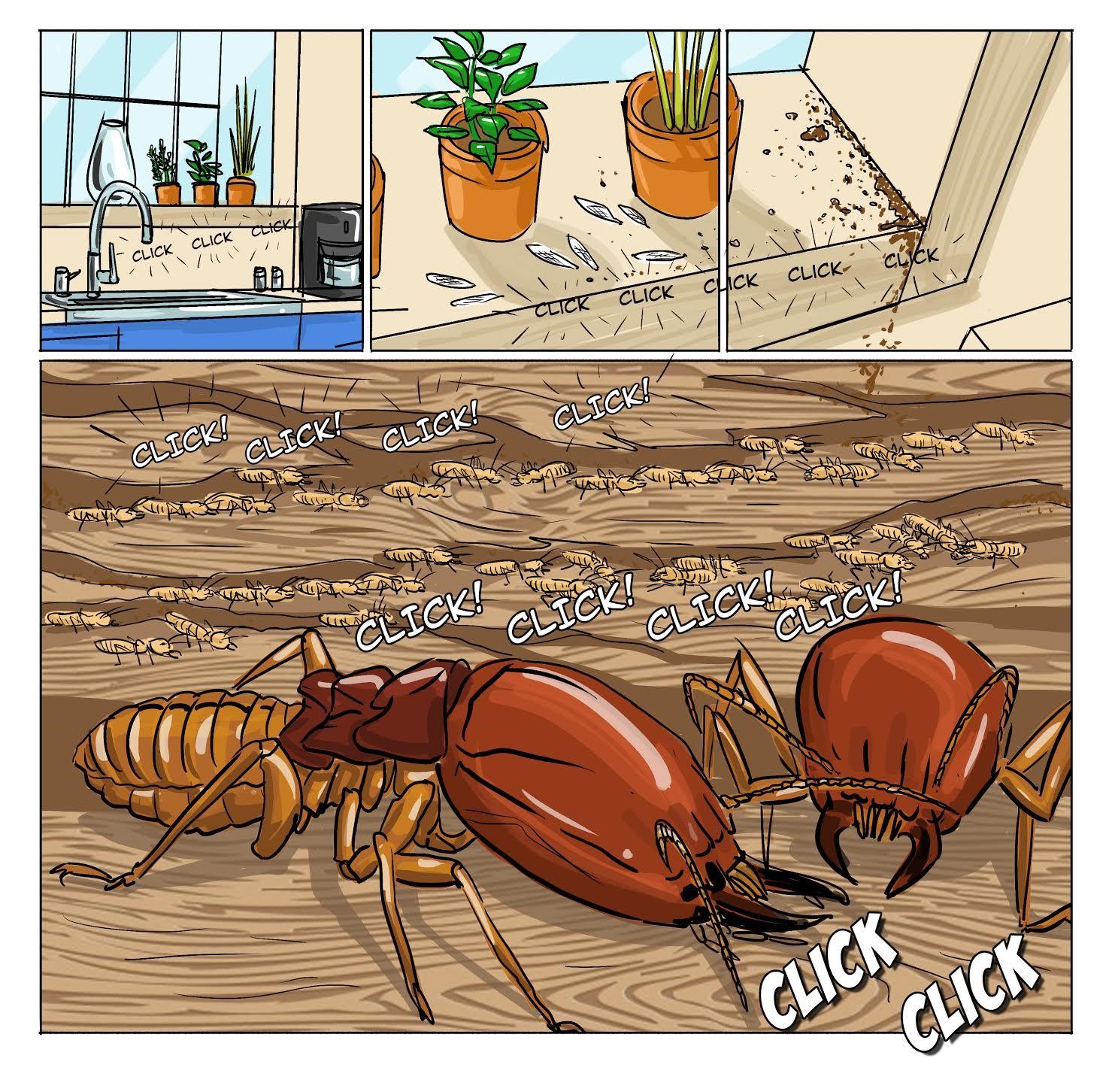Mar 26, 2018

Termite Infestation
Termites are often called “silent destroyers” because they can cause devastation to your home without you knowing until it’s too late. These pests consume cellulose-based materials, so they’re attracted to many of the materials used to build homes, like wood and even drywall.
There are millions of termite colonies around the Maryland, Northern Virginia, and Washington D.C area. They travel back and forth through the soil by building tunnel systems to reach above-ground food sources. Firewood, mulch, the foundation of a wood structure – it’s all a nice meal for termites. And as the weather gets warmer and wetter in late spring, they get ready to invade.
Let’s explore how to identify and get rid of termites before they terrorize your home.
What do termites look like?
Termites are relatively small pests, ranging in size from 1/4 to 1/2 an inch, although the kings and queens can reach over an inch long. Worker termites are typically soft-bodied and pale in color, and flying termites also called “swarmers”, have large wings.
Are there termite look-alikes?
There are several household pests that homeowners often mistake for termites, particularly flying ants. Flying ants and flying termites (swarmers) look very similar and mate around the same time, which explains why they are often confused for one another.
There are several differences, however, between the two that can help homeowners identify which pest is giving them grief. Ants have pinched waists while termites have straight bodies, and termites have four equally-sized wings rather than smaller rear wings, which are typical of flying ants.
Another clear sign you’re dealing with termites rather than flying ants is discarded wings on your window sills; flying ants don’t shed their wings. If you suspect your home might have a termite problem, call one of our
Fairfax pest control professionals.
Are termites easy to see?
Some pests are so small they often go undetected by the human eye. While termites are relatively small, they can be easy to spot if you know what to look for. Swarmer termites are larger and more likely to be seen by homeowners, particularly in the springtime during mating season.
How do termites get in your house?
Termites can invade your home through the soil by building tunnel systems leading from their colonies to new food sources (your home). Here are some of the most common ways termites get into your house:
- Wooden structures, particularly those in direct contact with the ground like porches and decks.
- Mud or damp soil near the foundation of your house, especially near cracks, gutters, spouts, or other points of entry.
- Firewood stacks placed near or against the house.
Are termites dangerous?
Termites don’t bite humans, but that doesn’t mean they aren’t dangerous. Termites can cause severe damage to your home that can result in expensive repairs.
Since termites can chew through wood, they are able to destroy foundational structures like support beams. Although termites only feed on cellulose-based materials, they are also able to navigate through other materials like plaster and metal siding to get to other wooden structures inside the home, like cabinets and tables.
Termite damage often goes unnoticed until after they’ve caused considerable deterioration. If you suspect a termite infestation in your home, contact one of our five-star technicians immediately.
What are the signs of termite damage?
If you notice any of these signs in your home, call one of our five-star technicians to schedule a termite inspection:
- Temporary swarms of winged insects. Flying termites, also known as swarmers, indicate a termite colony exists nearby and that there may be an infestation inside your home. It’s most common to spot these pests in the spring during mating season.
- Cracked or bubbling paint. Flaking and bubbling paint occurs when moisture gets between the wood and the paint, and there’s a chance the source of the moisture behind the paint is from termites burrowing into the wood. However, there are a number of issues that lead to bubbling paint, so be sure to have this problem evaluated by one of our professionals to determine the cause.
- Wood that sounds hollow when tapped. Termites often work their way from the inside out when chewing through wooden structures. One way to test for damaged wood is to tap or knock on it and see if it makes a hollow sound — this could indicate termite damage within the structure.
- Discarded wings from swarmers. During mating season, swarmers will take a flight to find a new place to start a colony. When they land, the swarmers no longer need their wings and will intentionally break them off before they start building the new colony.
- Mud tubes on exterior walls or in crawl spaces. A tell-tale sign of subterranean termites is the presence of thin, cylindrical tubing along the sides of your house. Subterranean termites need moisture to survive, so they’ll build mud tubes that lead from their underground nests to your house. This type of termite can be particularly aggressive, so make sure to contact a pest-control specialist at the first sight of mud tubes.
How do I get rid of termites?
Termites can ruin your home — or, at the very least, make you miserable. If you think you have termites, get help today. Our
five-star technicians can save your property from being destroyed. Schedule a termite inspection by calling 1-877-740-6657 or
contact us online.